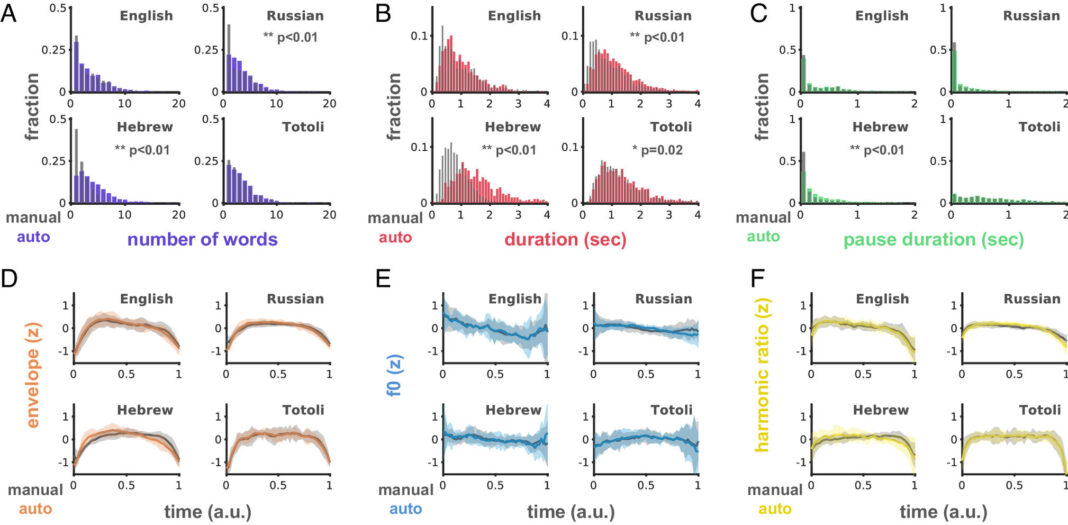Have you ever noticed that a natural conversation flows like a dance—pauses, emphases, and turns arriving just in time? A new study has discovered that this isn’t just intuition; there is a biological rhythm embedded in our speech.
The work is published in the journal Proceedings of the National Academy of Sciences.
According to the study, led by Dr. Maya Inbar, alongside Professors Eitan Grossman and Ayelet N. Landau, human speech across the world pulses to the beat of what are called intonation units, short prosodic phrases that occur at a consistent rate of one every 1.6 seconds.
The research analyzed over 650 recordings in 48 languages spanning every continent and 27 language families. Using a novel algorithm, the team was able to automatically identify intonation units in spontaneous speech, revealing that regardless of the language spoken, from English and Russian to endangered languages in remote regions, people naturally break their speech into these rhythmic chunks.
“These findings suggest that the way we pace our speech isn’t just a cultural artifact, it’s deeply rooted in human cognition and biology,” says Dr. Inbar. “We also show that the rhythm of intonation units is unrelated to faster rhythms in speech, such as the rhythm of syllables, and thus likely serves a different cognitive role.”
Why does this matter? intonation units play a critical role in helping listeners follow conversations, take turns speaking, and absorb information. They also offer children crucial cues for learning language. Most intriguingly, the low-frequency rhythm they follow mirrors patterns in brain activity linked to memory, attention, and volitional action, illuminating the profound connection between how we speak and how we think.
“This study not only strengthens the idea that intonation units are a universal feature of language,” explains Prof. Grossman, from the Department of Linguistics at Hebrew University, “but also shows that the truly universal properties of languages are not independent of our physiology and cognition.”
Co-author Prof. Landau, who holds appointments in both the Department of Psychology and the Department of Cognitive and Brain Sciences at Hebrew University and the Department of Experimental Psychology at University College London, adds, “Understanding this temporal structure helps bridge neuroscience, linguistics, and psychology. It may help explain how we manage the flow of information in the dynamic natural environment, as well as how we bond socially through conversation.”
As we move toward more human-like AI speech, better treatments for speech disorders, and deeper insights into neurological function, this research offers a powerful reminder: beneath the beauty and diversity of the world’s languages lies a shared rhythm, one that beats roughly every 1.6 seconds.
More information:
Maya Inbar et al, A universal of speech timing: Intonation units form low-frequency rhythms, Proceedings of the National Academy of Sciences (2025). DOI: 10.1073/pnas.2425166122
Provided by
Hebrew University of Jerusalem
Citation:
A universal rhythm guides how we speak: Global analysis reveals 1.6-second ‘intonation units’ (2025, August 20)
retrieved 20 August 2025
from https://phys.org/news/2025-08-universal-rhythm-global-analysis-reveals.html
This document is subject to copyright. Apart from any fair dealing for the purpose of private study or research, no
part may be reproduced without the written permission. The content is provided for information purposes only.



![Using Convenience to Disrupt the Competition [Podcast]](https://presstp.com/wp-content/uploads/2025/08/Using-Convenience-to-Disrupt-the-Competition-Podcast.jpg)

